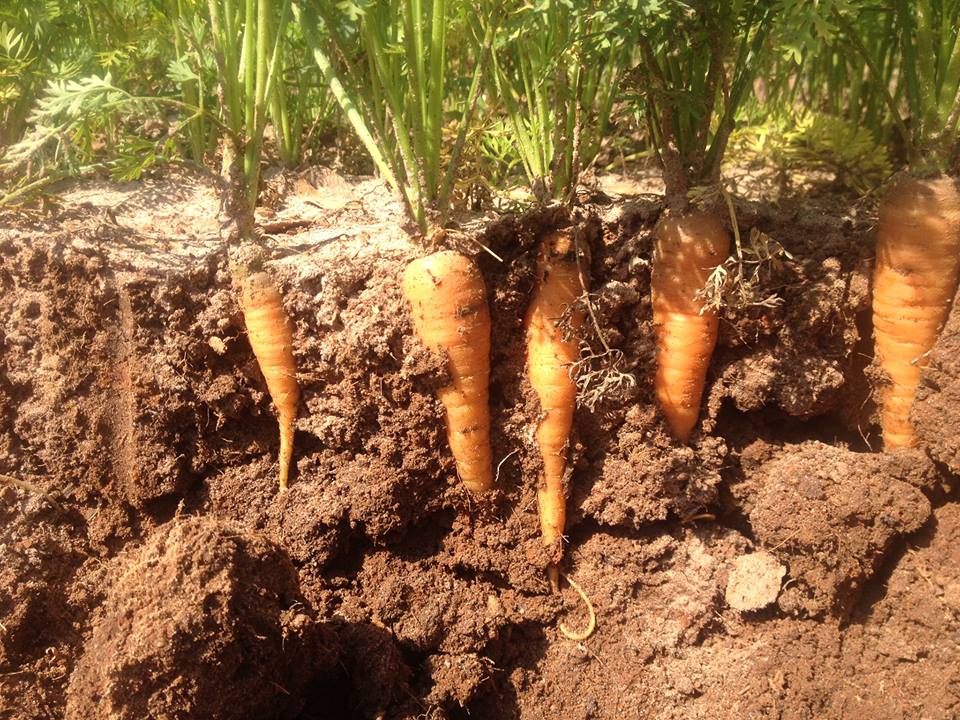
For small-scale farmers relying on cover crops and compost to fulfill their garden’s nutritional needs, it is important to remember healthy soil requires “life.” What is it that separates soil that can support fruit and vegetable production from soil that cannot? The answer is in the microbiology or microscopic life forms of the soil. As soil transitions from being impoverished to being enriched, many microscopic living entities will form complex ecosystems.
Just a teaspoon of healthy topsoil can contain up to one billion bacteria and numerous other microorganisms such as fungi, protozoa, and nematodes. As a small-scale farmer, you can obtain and support these beneficial microorganisms within your agricultural production by increasing the organic matter content of your soil. The organic matter also supplies a slow-release nutrient source for your fruits and vegetables.
Microorganisms will develop your soil by providing soil structure, aeration, and the conversion of insoluble nutrients into soluble, plant-available forms. When soil microorganisms decompose organic matter, they create soil aggregates. The soil aggregates will reduce soil compaction and greatly increase porosity for strong root growth, aeration, and improved drainage.
The portion of organic matter known as humus is very beneficial. Humus decomposes very slowly, and is comprised of many complex organic compounds, including lignin, protein, and sugars that will enhance your soil’s physical and chemical properties. This part of organic matter is the glue that binds the small soil aggregates, providing micro, meso, and macro (small, medium, and large) pore space for improved infiltration, but also enhanced soil water retention. Humus will provide a slow-release nutrient source, as it has a very large surface area capable of retaining many essential nutrients imperative for plant development. Humus acts as a soil buffer, which helps maintain proper soil pH, and can also bind heavy metals which otherwise may cause plant metal toxicities.
Microorganisms such as rhizobia bacteria and mycorrhizae fungi provide direct benefits to your farm by their reciprocal interactions (symbiotic relationships) with leguminous crops for atmospheric nitrogen fixation. This essentially provides free fertilizer, so be sure to include legumes within your crop rotation. Soil also provides an excellent habitat for beneficial nematodes. Although the plant-parasitic types give nematodes a bad reputation, most soil nematodes are actually free-living and can be very valuable for their ability to decompose organic matter.
By adding compost and incorporating cover crops and organic mulch, you can encourage a favorable environment for life. It is also important to keep the soil properly irrigated and aerated, as all life requires water and most good bacteria are aerobic and therefore require oxygen. Many pesticide applications can negatively affect diverse microorganism populations, and should be kept at a minimum if your goal is to build strong microorganism populations. Although plastic mulch can be useful for growing many crops, avoid excessive use in one location, as it can reduce air flow and can disturb the formation of organic matter.
For small-scale farmers that rely upon compost and cover crops to meet their crops’ nutritional needs, it is imperative to maintain all of the components that life requires, including food, water, and air. This will promote soil microbial diversity, and therefore a complex food web, which will assist in combating crop pests and diseases, which are numerable in the Southeast’s humid climate. By securing the health of your soil, you are also actively securing the health of the many fruits and vegetables your farm will be able to produce for years to come.
For more information on this topic, please see the following UF/IFAS Publication:
Soils & Fertilizers for Master Gardeners: Organisms in the Soil
 0
0
